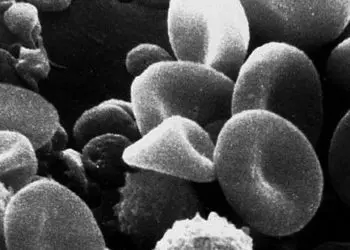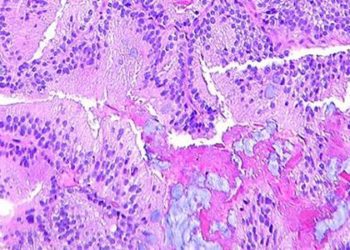Prostate cancer screening shows reduction in mortality after 13 year follow-up [ERSPC trial]
1. Prostate cancer screening showed a continued reduction in prostate cancer incidence and mortality after a longer follow-up of 13 years compared to previous results after 9 and 11 years.
2. The absolute effect of screening was substantially increased after 13 years of follow-up, demonstrated by a reduction in the number needed to invite for screening to prevent one cancer death and the number needed to detect cancer from values after 9 and 11 years.
Evidence Rating Level: 1 (Excellent)
Study Rundown: Screening for prostate cancer has been shown to significantly reduce prostate cancer mortality but is still controversial due to potential overdiagnosis leading to overtreatment and side effects. The European Randomised study of Screening for Prostate Cancer (ERSPC) began in 1993, and included 162,388men aged 50-74 from the Netherlands, Belgium, Sweden, Finland, Italy, Spain, Switzerland and France. To assess the affect of prostate cancer screening on mortality from prostate cancer, participants were either screened for prostate cancer or underwent no intervention. Previous follow-up results from 9 and 11 years showed a significant reduction in prostate cancer mortality. This study presented updated results including follow-up after 13 years.
The study showed that screening resulted in a continued decrease in prostate cancer incidence and mortality after a longer follow-up of 13 years compared to 9 years. The number needed to invite for screening to prevent one cancer death and the number needed to detect cancer substantially decreased with a longer follow-up as well. This analysis is strong as a long-standing study with a high enrollment of participants. Limitations include contamination in the control group and relatively short follow-up. The authors conclude that prostate cancer screening significantly reduces prostate cancer mortality with an increased effect seen after 13 years compared to 9 and 11 years. Despite these findings, further analysis of harm reduction is still required before the introduction of population-based screening for prostate cancer.
Click to read the study in The Lancet
Relevant Reading: Randomised prostate cancer screening trial: 20 year follow-up
In-Depth [randomized controlled trial]: The primary outcome of the study was prostate cancer mortality and analysis was based on intention to treat (or screen). Secondary analysis corrected for non-participation in the screening group. Results were collected after a follow-up period of 13 years and the values were compared to those collected after 9 and 11 years of follow-up.
7,408 prostate cancer cases were diagnosed in the screening group and 6,107 in the non-intervention group. Prostate cancer incidence decreased in the screening group compared to the non-intervention group after a longer follow-up period, with an incidence rate ratio of 1.57 (95% Confidence Interval [CI] 1.51-1.62) after 13 years, compared to 1.66 (1.60-1.73) after 11 years and 1.91 (1.83-1.99) after 9 years. Prostate cancer mortality also decreased with screening, but the relative effect was mainly detected between 1-11 years, with little change during years 11-13. Mortality decreased by 21% after 13 years (Rate Ratio [RR] 0.79, 95% CI 0.69-0.91, p=0.001), compared to 22% after 11 years (0.78, 0.66-0.91) and 15% after 9 years (0.85, 0.70-1.03). After adjusting for non-participants in the screening group, mortality decreased by 27% after 13 years (0.73, 0.61-0.88, p<0.0007) compared to 29% after 11 years (0.79, 0.58-0.88, p=0.001).
The absolute effect of screening also showed a benefit with a longer follow-up period. The number needed to invite for screening to prevent one cancer death decreased to 781 after 13 years, from 979 after 11 years and 1,410 after 9 years. The number needed to screen to detect cancer decreased to 27 after 13 years, from 35 after 11 years and 48 after 9 years.
Image: PD
More from this author: Funding for antibiotic research in UK may be trailing behind resistance,Childhood tuberculosis incidence may be 25% higher than prior estimates, Adults with Asperger’s syndrome at increased risk for suicidal thoughts and behaviors, UK fails to reduce deaths of young people, Most comprehensive study to date reveals climbing worldwide obesity prevalence, Weight loss during adulthood linked with long-term cardiovascular benefits
©2012-2014 2minutemedicine.com. All rights reserved. No works may be reproduced without expressed written consent from 2minutemedicine.com. Disclaimer: We present factual information directly from peer reviewed medical journals. No post should be construed as medical advice and is not intended as such by the authors, editors, staff or by 2minutemedicine.com. PLEASE SEE A HEALTHCARE PROVIDER IN YOUR AREA IF YOU SEEK MEDICAL ADVICE OF ANY SORT.









